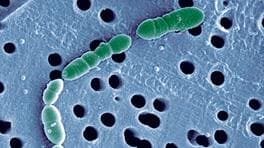Malolactic Bacteria Filter
Brand: Eaton CorporationThe addition of lactic acid bacteria (Oenococcus oeni) for malolactic fermentation has become increasingly significant during the last decade, particularly for wine preparation.
Previously known as second fermentation of the wine, modern oenologists use lactic acid bacteria specifically in the form of simultaneous inoculation or as a classic tool for inoculation after alcoholic fermentation.
Features- The key elements of malolactic fermentation are microbiological stability and harmonizing the flavor and the taste of the wine. Particular importance is placed on selecting the right lactic acid bacterial starter culture, which ultimately determines the sensory profile of the wine, and on the timing of inoculation. Adding the lactic acid bacteria directly (which is known as direct inoculation) guarantees a fast start and rapid cell proliferation, and forms the basis for optimal breakdown of L-malic acid into L-lactic acid to form secondary aromas that shape the desired style of the wine.
- In simultaneous inoculation, the lactic acid bacteria are added to the must at the same time as the yeast.
- In fermentation inoculation, malolactic starter cultures are added halfway through the alcoholic fermentation process. However, the bacteria’s cell proliferation is strongly inhibited at this point due to the high metabolic activity of the yeast. Performing the inoculation at this time is therefore generally not recommended.
- In post-fermentation inoculation, the lactic acid bacteria are added to the wine once the alcoholic fermentation process is complete.
Documentation
Document
- GVO Confirmation pdf 307 KB
- Technical Information SIHALACT Oeno pdf 80 KB
- Technical Information VINIFLORA CH11 pdf 67 KB
- Technical Information VINIFLORA CH16 pdf 67 KB
- Technical Information VINIFLORA CH35 pdf 62 KB
- Technical Information VINIFLORA LS CH35 Frozen Cultures pdf 63 KB
- Technical Information VINIFLORA LS OENOS Frozen Cultures pdf 62 KB
- Technical Information VINIFLORA OENOS pdf 62 KB
